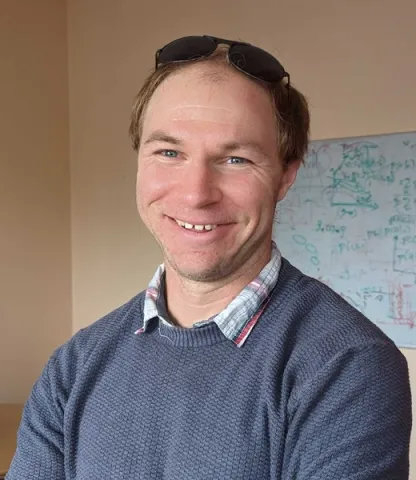About the project
What happens when a giant star falls into a black hole? This project revolves around the most extreme events in the Universe. It uses cutting-edge analysis and machine learning techniques on data from the Rubin Observatory, and works alongside world experts, to understand the most luminous cosmic puzzle of our time.
Modern all-sky surveys are uncovering unusual, extremely luminous, long-lived flares in the centres of distant galaxies. Too bright to result from a single star’s death, they are more likely powered by violent accretion of material onto a supermassive black hole. This project aims to reveal what that material is and how it arrives, key to understanding black hole growth.
Around 20 of these ambiguous nuclear transients (ANTs) are known, including the most energetic cosmic event ever observed, discovered by the Southampton group. One possibility is that a massive star is torn apart by tidal forces, though how such stars reach the black hole remains unclear. Alternatively, they might involve instabilities in existing accretion disks—but the timescales appear too short. Many events show mid-infrared “echoes,” suggesting they are enshrouded in warm dust, perhaps some of which is falling in.
Southampton plays a leading role in two major facilities central to this project. The Rubin Observatory’s Legacy Survey of Space and Time (LSST) will discover millions of new astrophysical transients—supernovae, tidal disruptions, and hundreds of ANTs. Southampton is also a core member of the Time Domain Extragalactic Survey (TiDES), which will obtain spectra of every ANT LSST finds.
In this project, you will compare theoretical models with LSST light curves and TiDES spectra to measure the energy, black hole mass, and chemical composition of ANTs. You will also have opportunities to use world-class facilities such as the Very Large Telescope and James Webb Space Telescope, working in an international team with extensive opportunities for collaboration and travel.
As well as receiving core scientific training, you will:
- develop advanced skills in statistical modelling, Bayesian inference, and data visualisation
- gain experience with machine learning and AI methods applied to large datasets
- build expertise in high-performance computing, programming (Python), and version control
- have opportunities to present results through scientific papers, conferences, and outreach activities
- strengthen transferable skills in teamwork, project management, and communication
The School of Physics and Astronomy is committed to promoting equality, diversity inclusivity as demonstrated by our Athena SWAN award. We welcome all applicants regardless of their gender, ethnicity, disability, sexual orientation or age, and will give full consideration to applicants seeking flexible working patterns and those who have taken a career break.
The University has a generous maternity policy, onsite childcare facilities, and offers a range of benefits to help ensure employees’ well-being and work-life balance. The University of Southampton is committed to sustainability and has been awarded the Platinum EcoAward.
